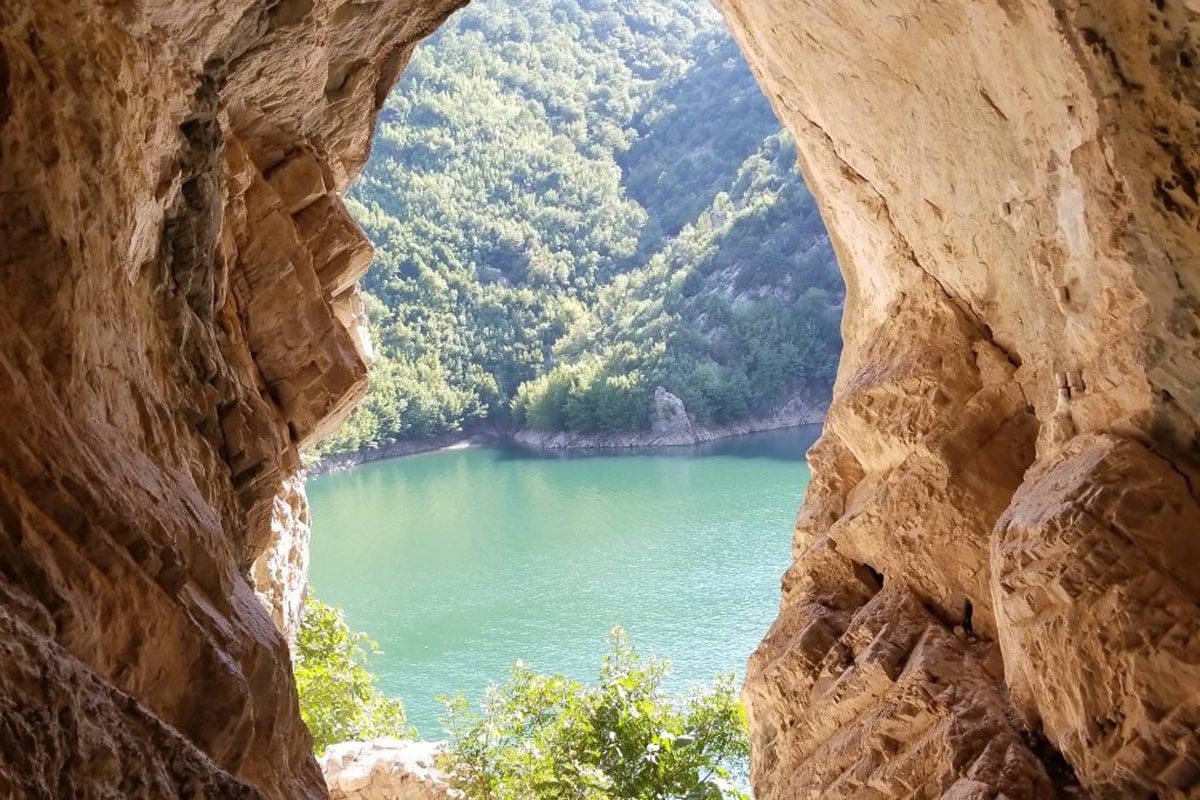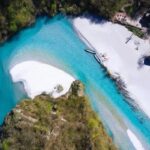Starting in the Drin valley, travelers may have a magnificent trip to popular places in the Albanian Alps. The first place that most tourists visit on their trip is the Shala River. But others are as significant in terms of the scenery they provide and the history they preserve, so you should check them out first.
As you set off from the Koman hydroelectric dam in the direction of the Shala River, the top of Murga, from where you can take in a breathtaking vista, will be on your right. A short boat journey brings us to the Drin River, at the base of the Murga mountain. This vista may be seen a few meters above the coast, reached by climbing between the heavy boulders.
Close to the Puka settlement of Qelez, a few meters above the Komani lake, is where you’ll find the Kaurri cave. It is believed that this community was established between the times of the Slavic and Ottoman invasions.
Legend has it that sixty Catholic monks fled the populated regions to this cave system when they were persecuted by the Ottomans and found refuge here. Murg, the mountain’s highest peak, is named for the monks in this tale.
Whether you know it as Kaurri Cave or Murgve Cave, it’s located around 120 meters from the old Drin, 35 meters above it in today’s lake mirror; it’s a nearly vertical slope, perpendicular to the river, and difficult for the enemy to access. Since the time of the Slavic barbarian invasions, and again during the Ottoman invasions, this cave has been here; during both periods, Catholic clergy or Catholics in general sought places in steep areas in difficult areas where the enemy could not come and they could escape to preserve their identity. The Albanians could always depend on their deity and the country’s rugged mountain landscape to be on their side.
No one dared bring up the monk’s peak or the Kaurri cave’s existence under communist rule, thus they were forgotten. This disbelief stemmed from the widespread hostility the administration had sown among the Albanian people against any kind of religious practice. During the time of Ottoman authority, priests and believers hid in the cave to avoid persecution and the threat of being forced to convert their religious beliefs. This centuries-old community had to be forgotten by the dictatorship because of its vital role in the elevation of Christianity, according to official beliefs.
The Kaurri cave has been forgotten for so long that it has been converted into a bat refuge, and no government agency has shown any interest in doing archaeological study there or even recognizing the cave as an existing monument. Residents of the surrounding communities have maintained the Kauri cave, which is mostly frequented by international visitors, even though the organizations responsible for its maintenance have long since abandoned it.






